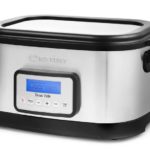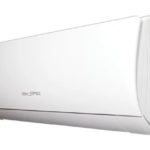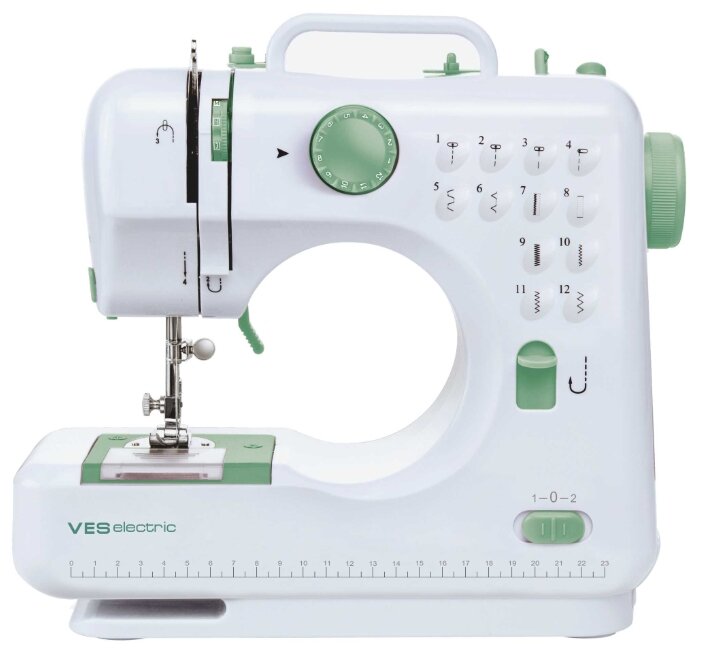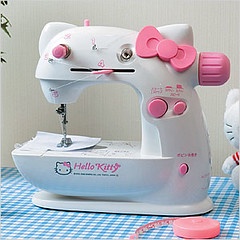Rating of the best voltage stabilizers for home and garden 5 and 10 kW: which one to buy
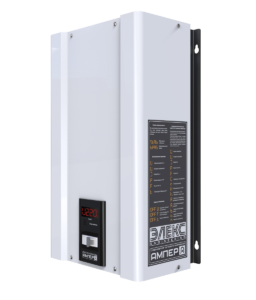
creativecommons.org
Voltage stabilizers maintain the safe operation of electronic equipment during random power surges in the home. Such a device fixes the value in one numerical range and does not allow it to fall or rise within the designated indicators - your household appliances will be safe from possible overvoltage in the network. This is especially important for private homes where the power regularly goes out or where a smart neighbor plugs a welding machine, grinder and drill into one outlet every evening.
Which voltage stabilizer is the most reliable? In our article, we tried to understand this point and presented our rating of voltage stabilizers for the home.
The content of the article
What parameters were used to create the voltage stabilizer reliability rating?
When choosing this or that equipment, be sure to consider the following parameters:
- Phasing - look at what network the equipment is designed for: single-phase or three-phase;
- Power - add up the indicators of all electrical appliances that constantly operate from the network, and compare with the indicated figure on the stabilizer;
- Range of possible stabilization - determine at what maximum voltage values the device operates and compare with yours at home;
- Accuracy - here it is worth looking in advance at the percentage and numerical value of the error in the operation of the device;
- Type of device - on what principle of stabilization the instrument is designed;
- Indication system - how the stabilizer will signal the user about voltage surges or malfunctions;
- Surrounding space - when choosing a device, look at where it will be installed (outdoors, indoors, etc.).
Which model to choose: single-phase or three-phase?
Our rating of stabilizers for a summer residence includes both options, but you need to decide why the user needs them.
Single-phase devices are combined with household or office appliances of standard single-phase voltage (220 V): consumer electronics, printers, faxes, computers, system units, etc.
Three-phase devices are used by consumers of three-phase voltage for industrial purposes (380 V): engines, electric furnaces, communication centers and railway connections. Such a device can also be installed for home use, for example, when a three-phase 380 V network is connected to a private house. Of course, such a solution is not always required, because:
- installation of 3 single-phase stabilizers costs the owner a little less than one, but for 3 phases;
- if the voltage is lost in one of the phases, the protection unit is triggered, and then all equipment is automatically turned off. Installing single-phase devices on three streams ensures uninterrupted operation of consumer electronics, even when one phase is de-energized.
What additional features are worth paying attention to?
In addition to the characteristics indicated above, when determining our rating of voltage stabilizers, we took into account the following points:
- response time to a change in input current (the longer the device “thinks”, the higher the chance of late operation and failure of all household equipment);
- Efficiency (the higher the percentage, the lower the energy consumption);
- noise (some models contain excessive sounds or clicks, which makes them not very comfortable to install in a living room);
- method of setting the input flow (the most effective way to obtain inverter products is double conversion, which results in a pure sine wave);
- assembly material (you need to select devices only with a metal body, because it is stronger, safer for use and protected from mechanical stress).
The best voltage stabilizers for the home - rating
Our rating of voltage stabilizers for the home includes models in the range from 5 to 10 kW - this is quite enough for domestic use and connecting any home appliance. In any case, this is only a subjective opinion, and the final choice is yours.
RUCELF SRWII-6000-L
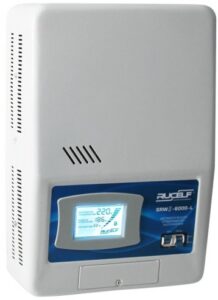
creativecommons.org
The stabilizer is of domestic production, the assembly bases of which are located in Russia and China. The model is installed using the floor method. The advantage is a wide input range of 10-270 V, which turns the device into a universal one. The disadvantages include excessive noise, but they will not interfere if installed in a non-residential area. Power - 5 kW, measurement accuracy is 6%. Excellent efficiency stands out - 98%.
Resanta ACH-5000/1-C
Another model from the rating of 220 V voltage stabilizers for the home with a power of 5 kW is connected using floor-mounted terminals. Input current - from 140 to 260 V. Operating efficiency is about 97%. The main advantage is its location in the budget segment. Users note some inaccuracies, because the percentage of error is 8%. Otherwise, the device is excellent for both home and country use.
RUCELF SDWII-6000-L
Our rating of stabilizers includes a new addition in the form of a wall-mounted device with a power of 5 kW and an input range from 130 to 280 V. Users note confident and smooth operation. It’s easier to say: “bought, installed and forgotten.” There is an impressive accuracy of work - an error of only 1.5%. It is connected, like other models in the line, with terminals. Efficiency is 98%.
Era STA-W-5000
Wall relay device with a power of 5 kW. The manufacturer is located in Russia. There is a bypass and a start delay, a wide current input range - 140-270 V. There are only a few negative reviews. It is connected via terminals and has its own cooling system. The errors are up to 8%, and the efficiency is lower than competitors - 95%.
RUCELF SRWII-9000-L
The rating of voltage stabilizers for the home is completed by a model with a higher power - the device is designed for a starting power of 7 kW. Accuracy is about 3.5%. The stabilizer has a functional display and is characterized by low heating during operation. Wall mounted. Users note unpleasant clicks during operation, which is not felt when installed in a non-residential room. Input indicators vary between 130-270 V, efficiency indicators are 98%.


